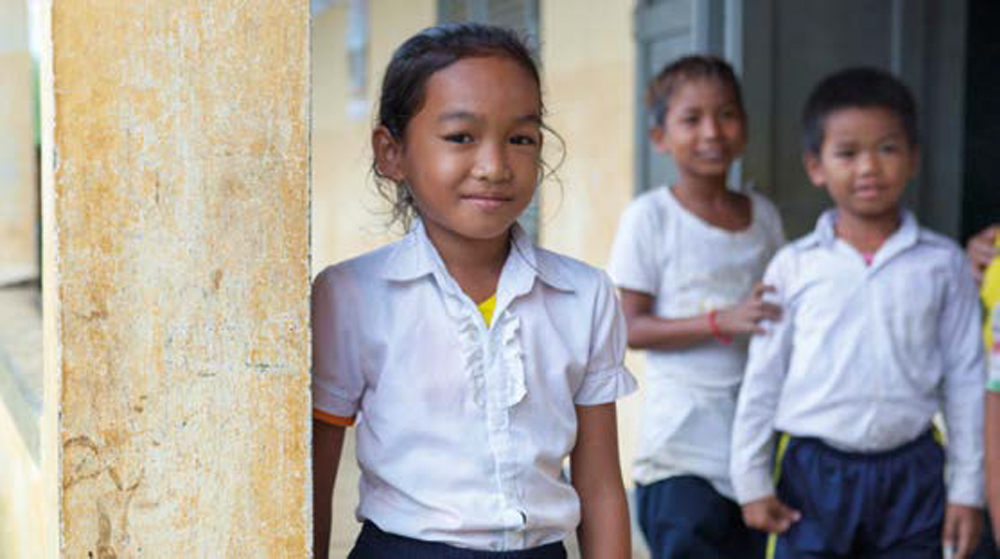Violence against children as seen by children
- by Meg Gardinier, Secretary General of ChildFund Alliance

With school now back in session for children around the world, countless boys and girls likely start their mornings thinking about what to eat for breakfast, what to wear to school, or how they will do in a sporting event later in the day. For an untold number of other children, however, their waking thoughts are filled with dread and anxiety over a global occurrence that can and must end—violence against children. A new survey of children across five continents reveals children are living their days in fear of violence, with girls fearing bad things will happen to them, and boys fearful they will be forced to do bad things to others.
Sadly, statistics support their fears. Each year, half of all children aged 2 to 17—an estimated 1 billion worldwide[1]—suffer from physical, sexual or emotional violence or neglect. Violence against children is a grim and harsh reality that recognizes no borders. To better understand its impact on children, ChildFund Alliance spoke with nearly 5,500 young people, aged 10 to 12 in 15 countries, documenting their opinions and ideas. The results are both disturbing and unacceptable.
More than 40% of child respondents said they do not feel sufficiently protected from violence in their country, with 80% citing physical violence, sexual abuse, and participation in war or organized crime as clear examples of violence faced by children. Nearly as many identified non-physical forms of violence, including sexual harassment and social media. They also associated the internet and social media as the most unsafe places for children, followed by streets and public transport. And they said that in violent situations, there is always a power imbalance between victim and aggressor, such as children’s inability to defend themselves.
The study also reveals boys and girls believe they are susceptible to different forms of danger. In group interviews, participants said they believe boys are at a higher risk of being kidnapped, robbed, or being involved in organized crime or child labor, and girls are more likely to be victims of sexual abuse, rape, forced marriage, and domestic work. 86% said mothers are the most likely protectors of children, whereas only 18% said political leaders are likely to protect them.
Half of the children reported that adults ignore them on matters that are most important to them. This is a missed opportunity given more than two-thirds (nearly 64%) believe they have valuable contributions to offer. By listening to what children have to say about violence, we learned an overwhelming 9 in 10 think adults can best end violence against children by loving them more and listening to what they have to say.
Whether addressing physical or psychological forms of violence, children possess valuable insights. They are keenly aware of the cycle of violence and its root causes, with a high percentage saying those who commit violent acts were likely victims themselves. As one child from Mexico shared, “there are some children…their parents insult them and hit them…they memorize that and…they get to school and take it out on other children.”
There is growing evidence children’s involvement in designing and implementing violence prevention strategies can itself prevent future violence. Behavioral psychologists, for instance, have found that involving children in group decision-making exposes them to different ways of thinking and problem-solving, which strengthens cognitive and social development[2]. When young people help produce knowledge that impacts policy in their own communities, moreover, they develop a stronger sense of responsibility for others, which may be critical to rejecting violence later in life.
ChildFund is already seeing strong success incorporating children’s perspectives into violence prevention efforts. In Central America, children are actively involved in the design and implementation of violence prevention programs to address the root causes of irregular migration. In South Korea, a child assault prevention program is teaching children greater awareness of their rights as well as self-defense techniques. A child-friendly accountability program underway in six countries is teaching children vital advocacy and leadership skills. Participants have already persuaded officials to review child safety policies in school and build a community center to focus on gaps in child welfare services.
In roughly the time it takes to read this—somewhere in the world a child has suffered a violent death. This is unconscionable. It is unacceptable. And it is preventable. Ending this cycle of violence requires listening to children, incorporating their opinions and expectations in policies and actions, and elevating their voices so they can help lead efforts to prevent violence in their own communities.
Children have a great deal to contribute to our mission to end violence against children, and the success of any policy or action aimed at them depends on our ability to engage and respond to their voices, opinions and expectations. As we approach the 30th anniversary of the UN Convention on the Rights of the Child[3], a global treaty on the rights of every child, there is no better time to listen and respond to their voices.
Meg Gardinier is the Secretary General of ChildFund Alliance.
[1] https://www.cdc.gov/violenceprevention/childabuseandneglect/vacs/onebillion-children.html
[2] https://www.researchgate.net/publication/44674474_A_Typology_of_Youth_Participation…
[3] https://www.ohchr.org/en/professionalinterest/pages/crc.aspx
